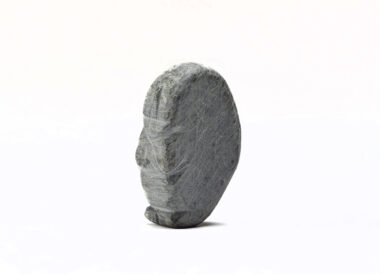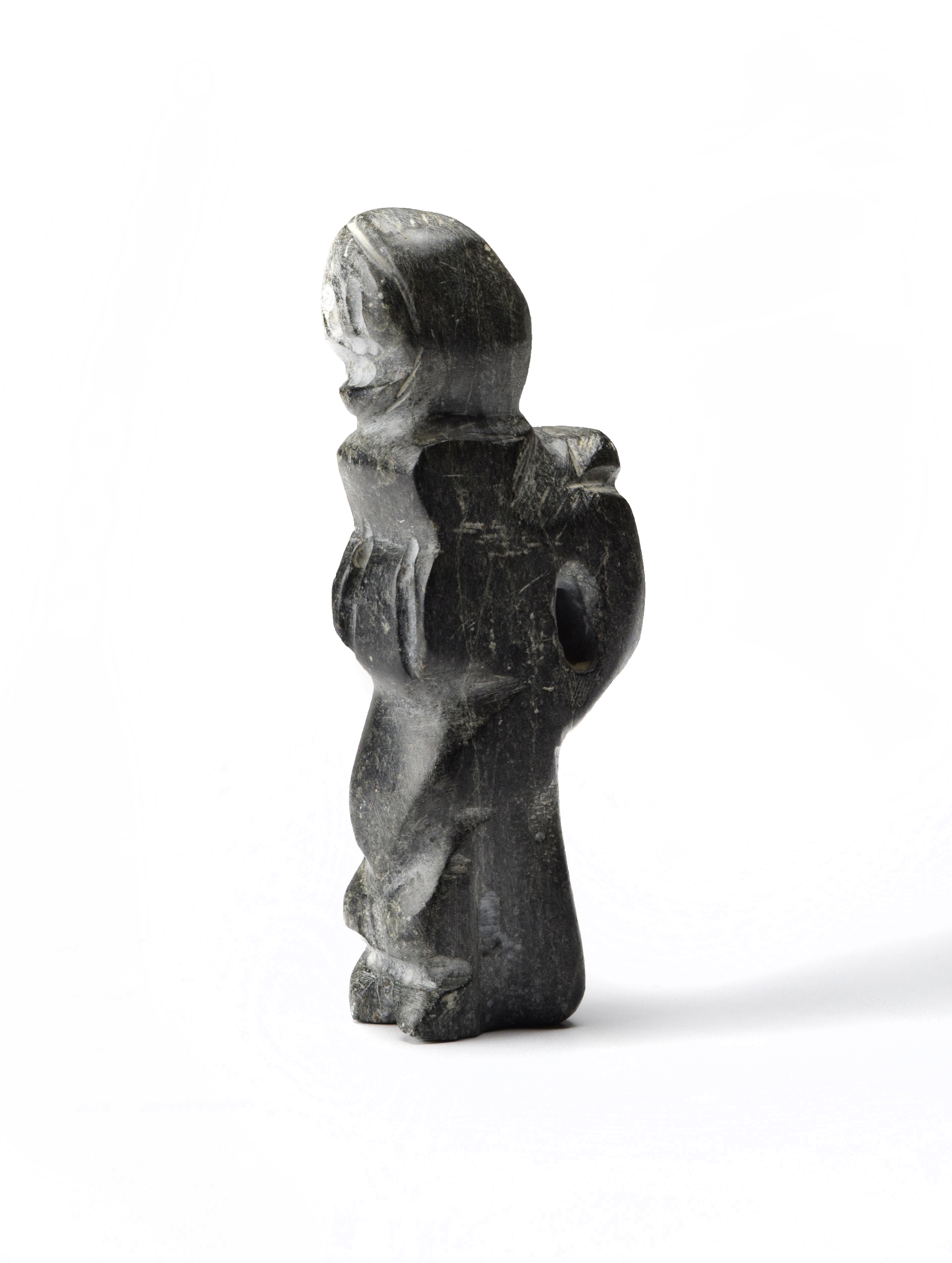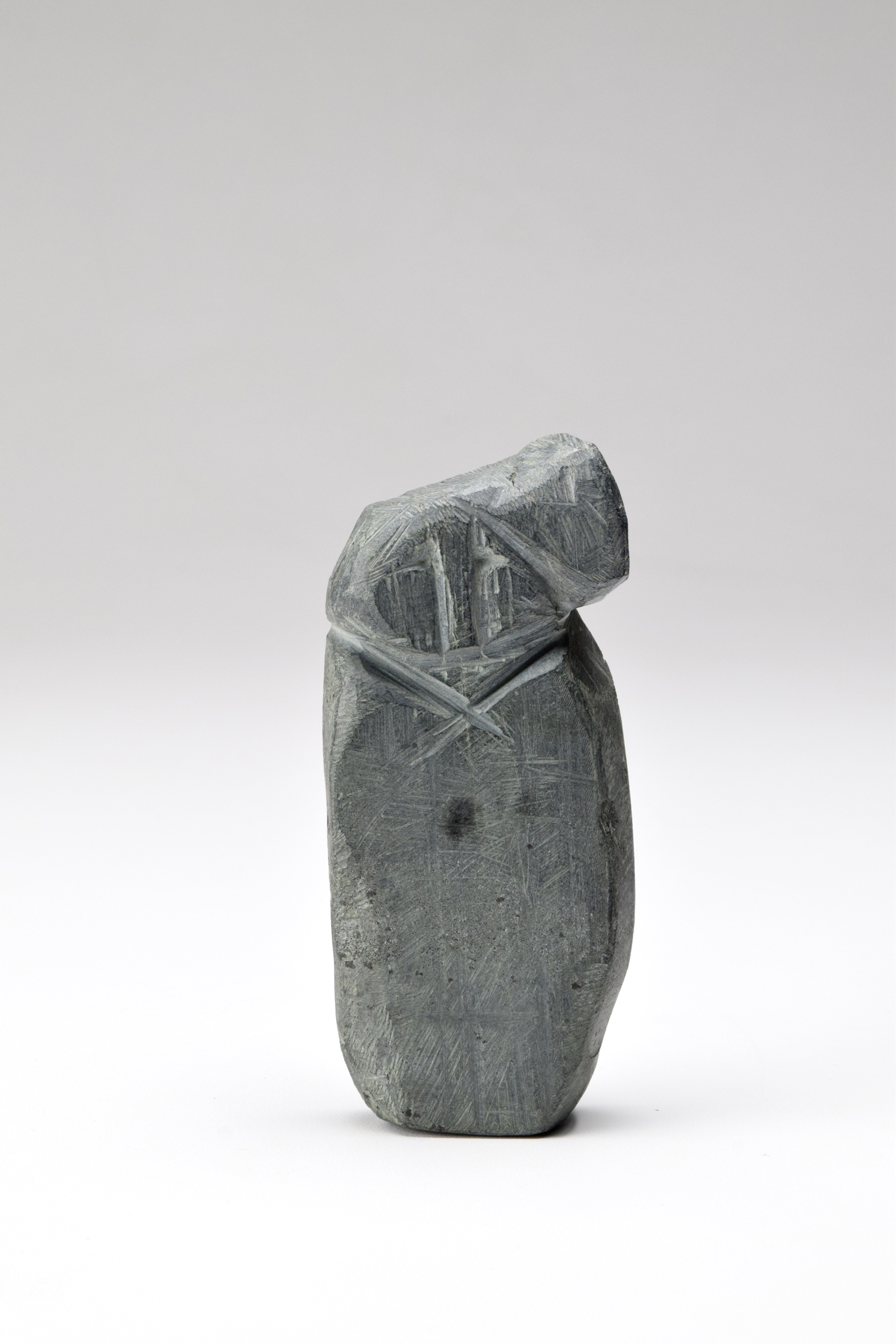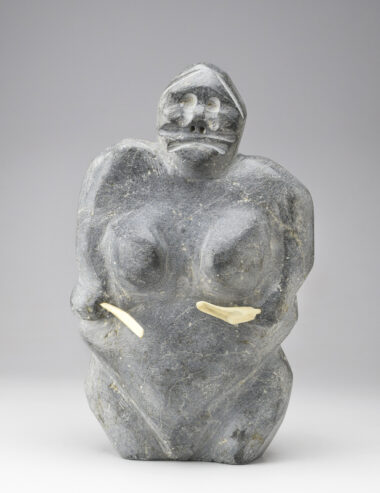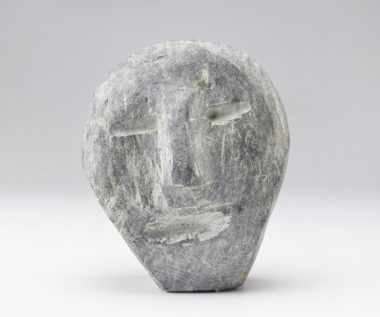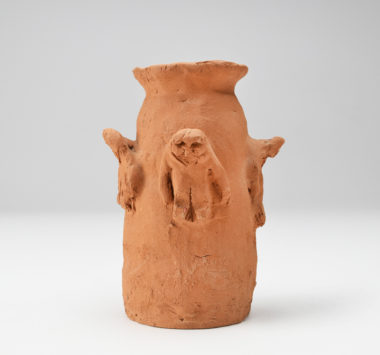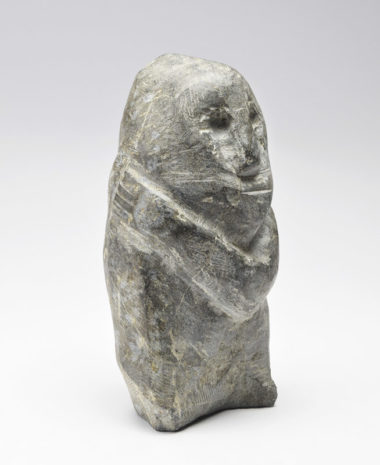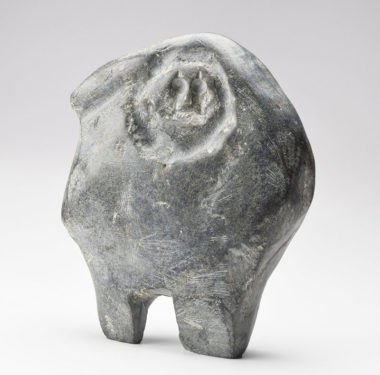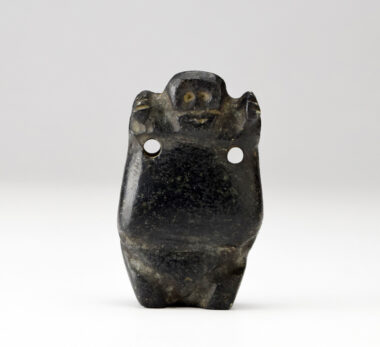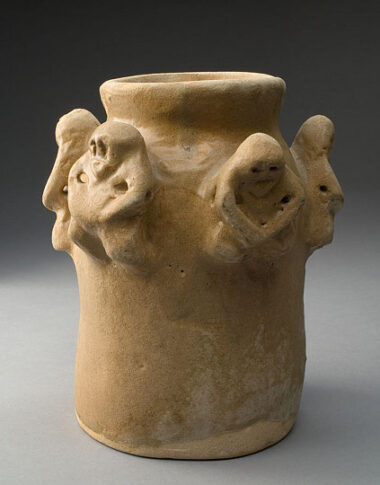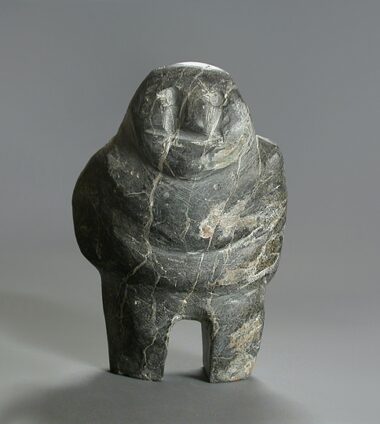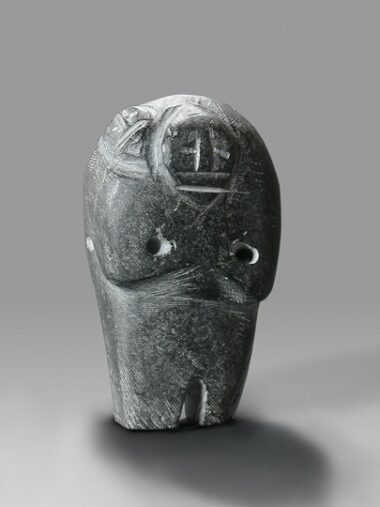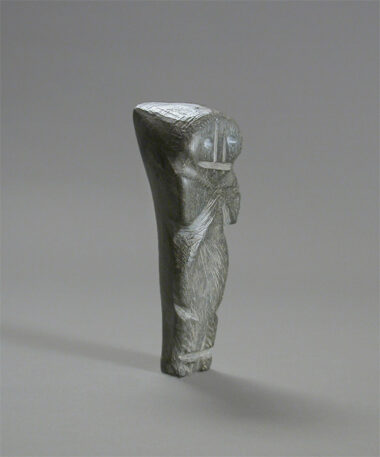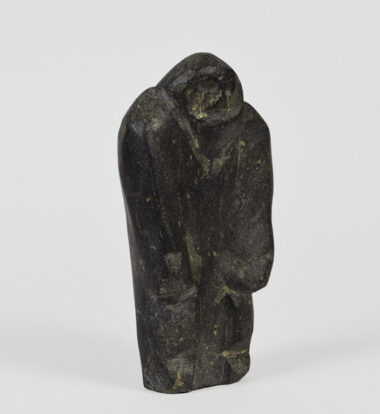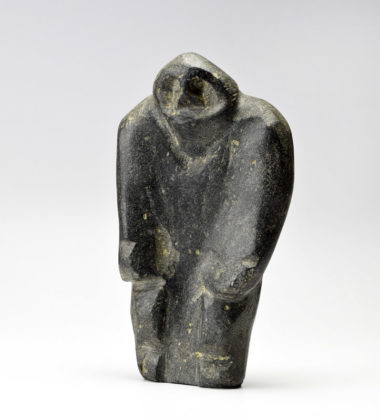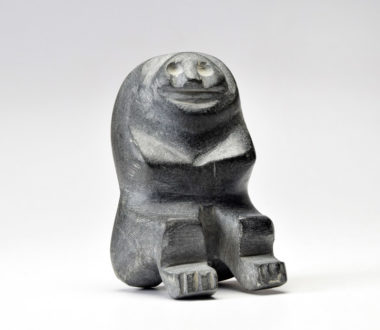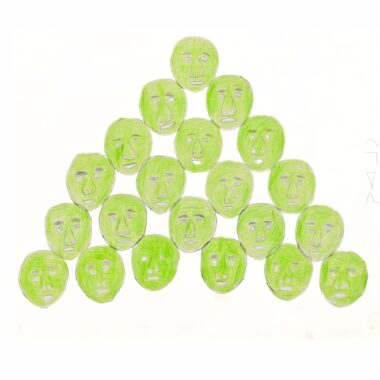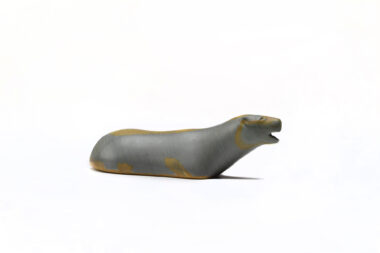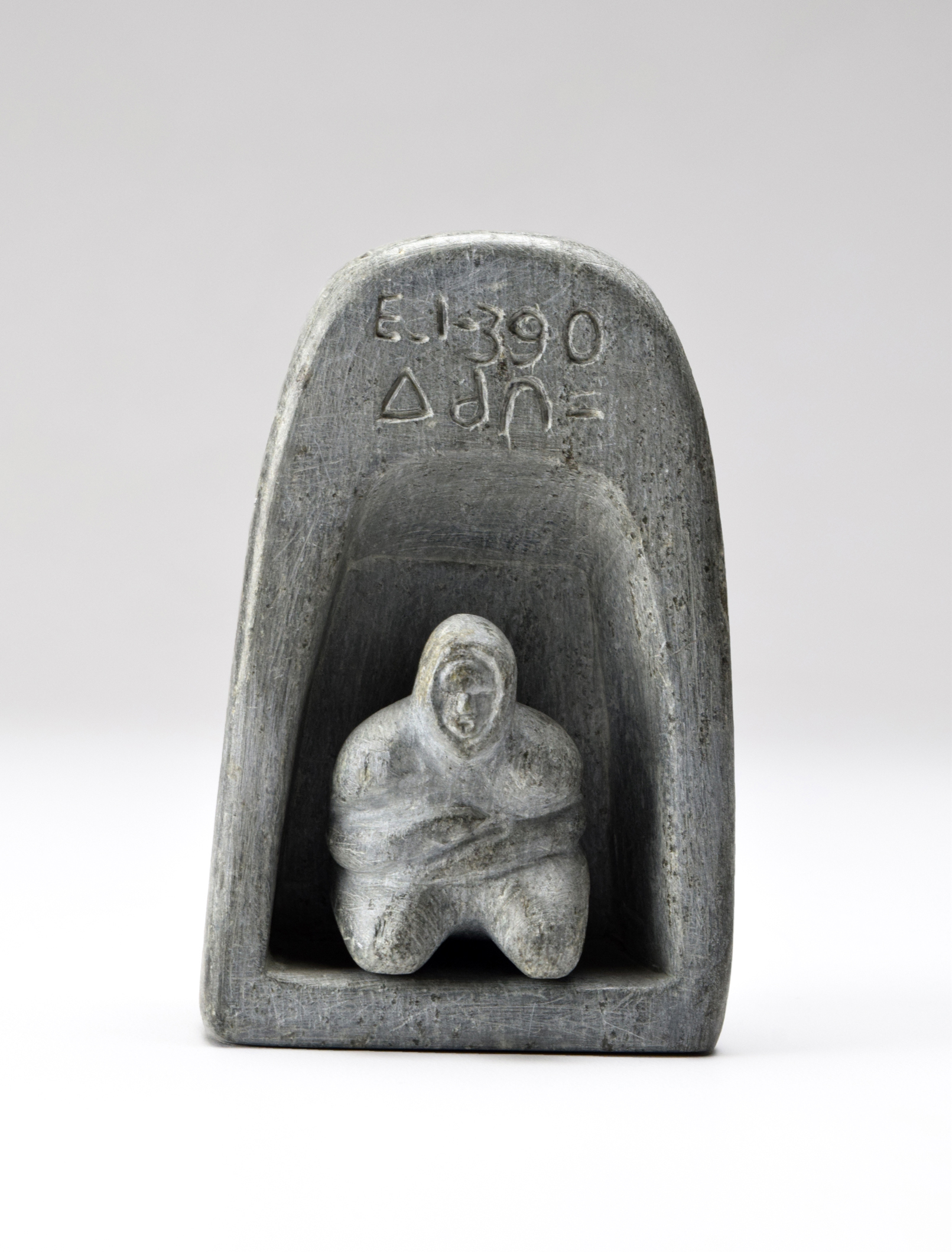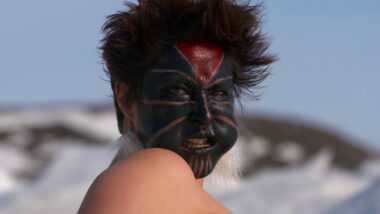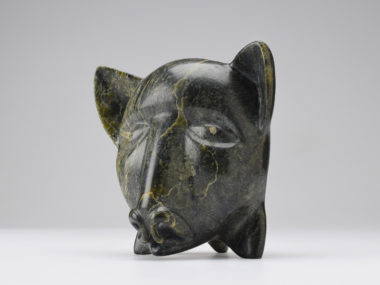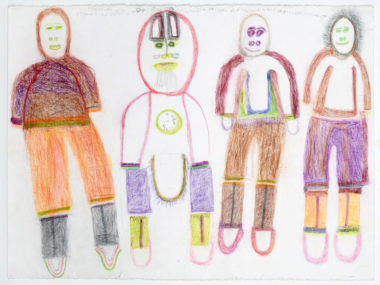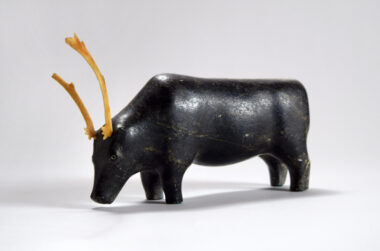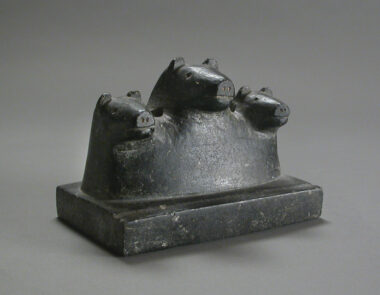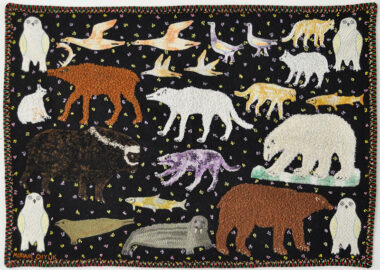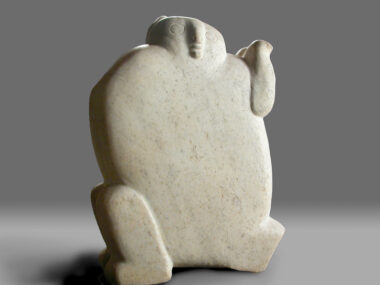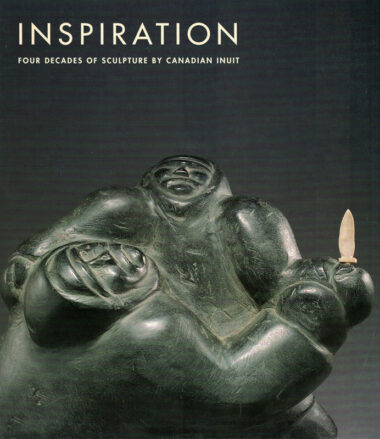John Kavik
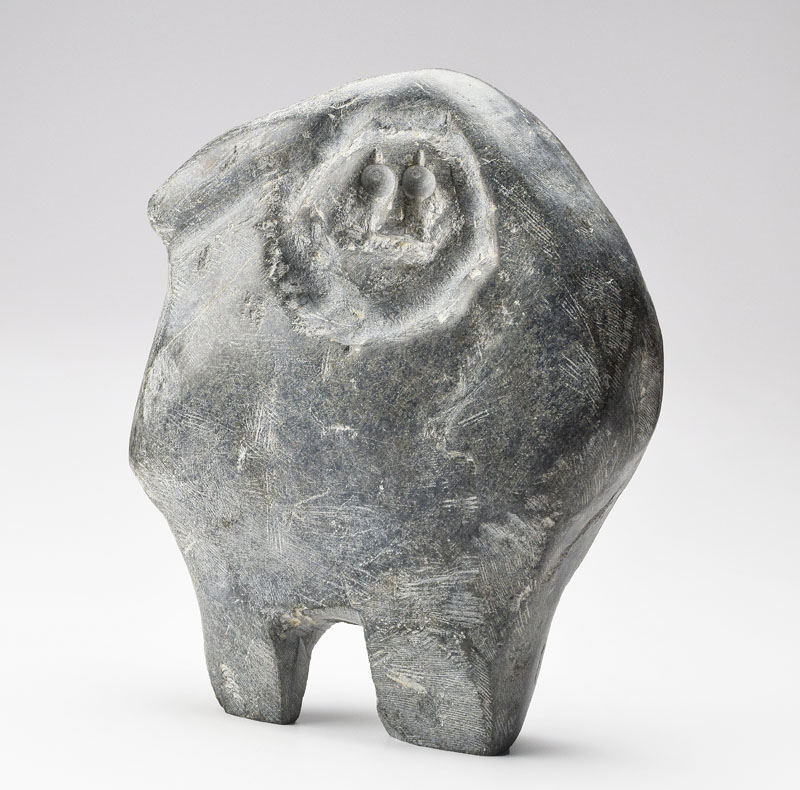
Born in Uqsuqtuuq (Gjoa Haven), John Kavik (1897 – 1993) was a member of the Utkusiksalingmiut (“people of the soapstone pots”), a mostly inland dwelling group of Inuit closely related to the Netsilik (“people of the seal”). In 1959, he moved to Kangiqliniq (Rankin Inlet), a new coastal settlement that developed in response to the then recent opening of the North Rankin Nickel Mine. Although Kavik never worked in the mine—he arrived in the community when he was already in his sixties—his son, the artist Thomas Ugjuk, did, a factor that likely explains Kavik’s decision to move there rather than to the inland settlement of Qamanittuaq, where many of his Utkusiksalingmiut contemporaries settled. Shortly after coming to Kangiqliniq, Kavik, a respected hunter during the earlier part of his life, began making stone sculptures for sale to the town’s white residents. Robert Williamson, an anthropologist who was based in the settlement at the time, was an early supporter, purchasing Kavik’s works when few others would. Another early proponent of Kavik’s unusual expression was the collector and curator George Swinton, who helped bring his sculptures to the attention of viewers in southern Canada and beyond.
